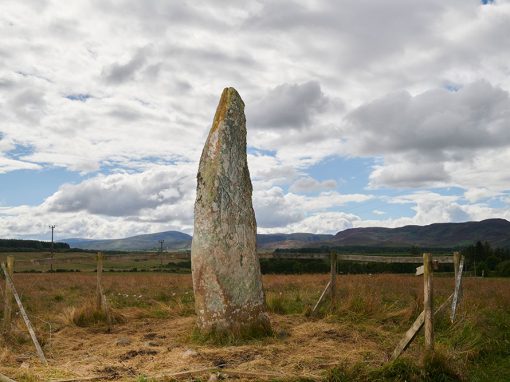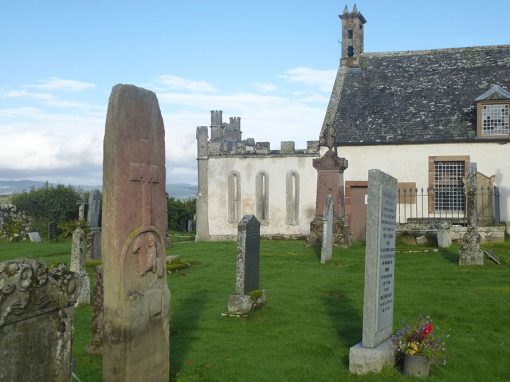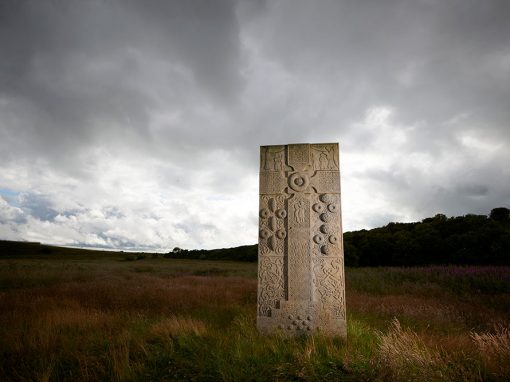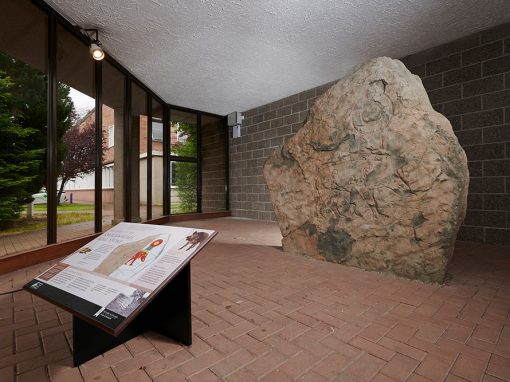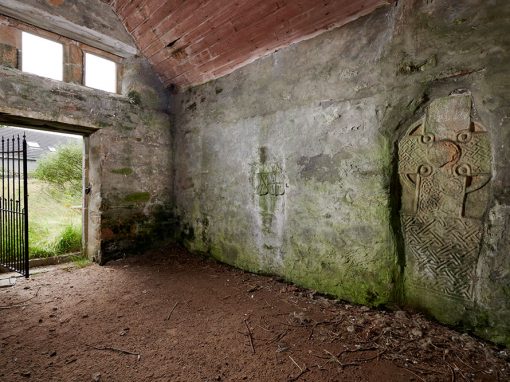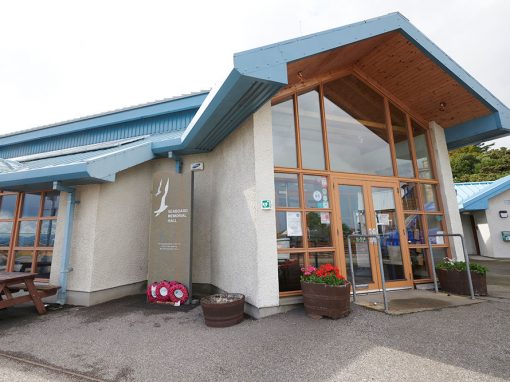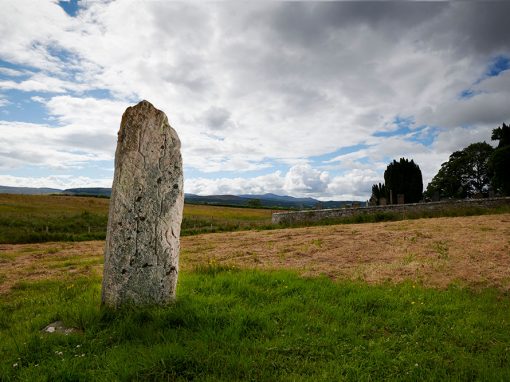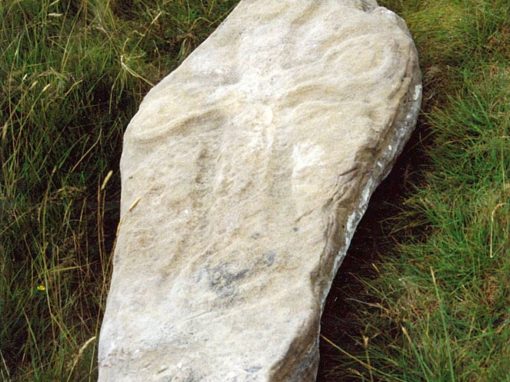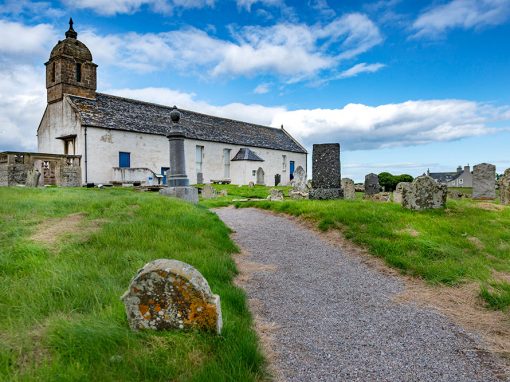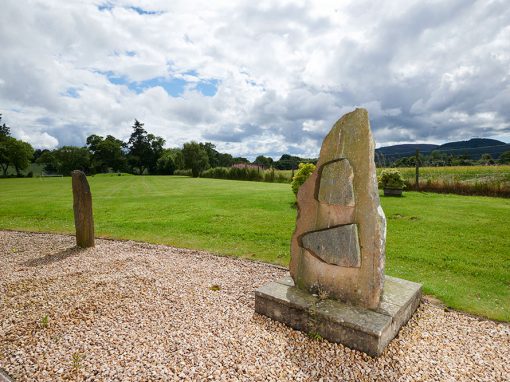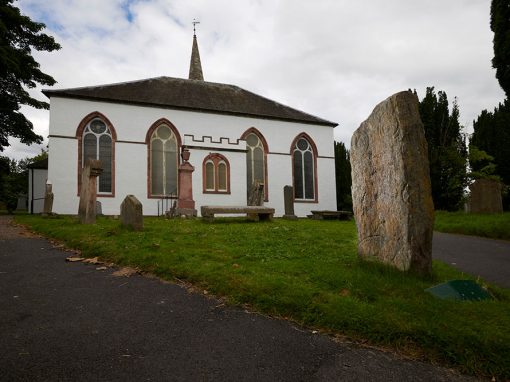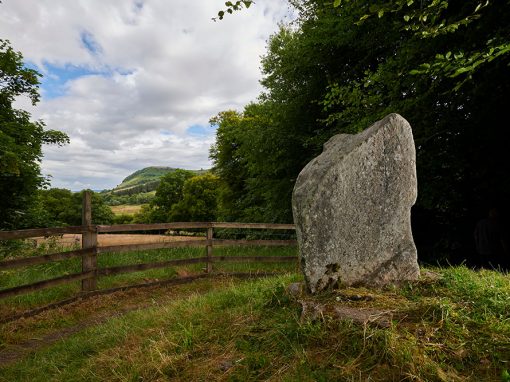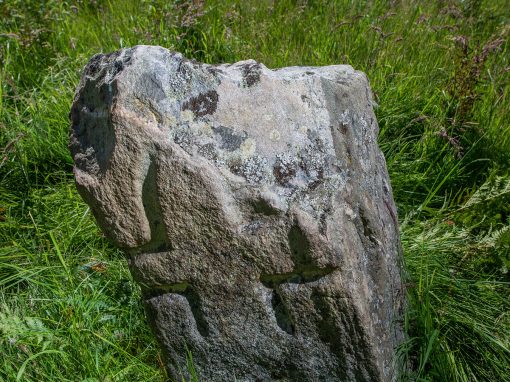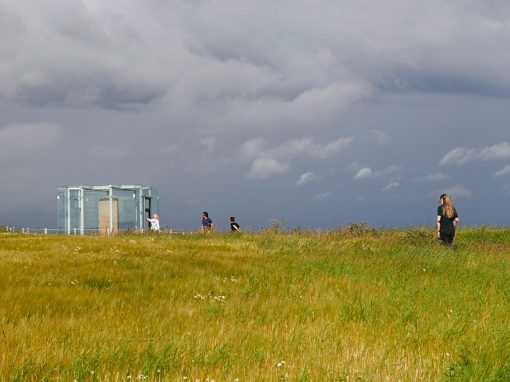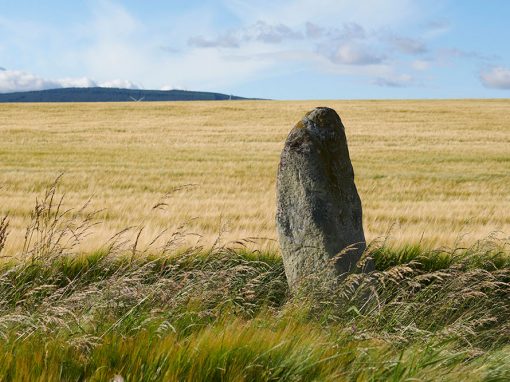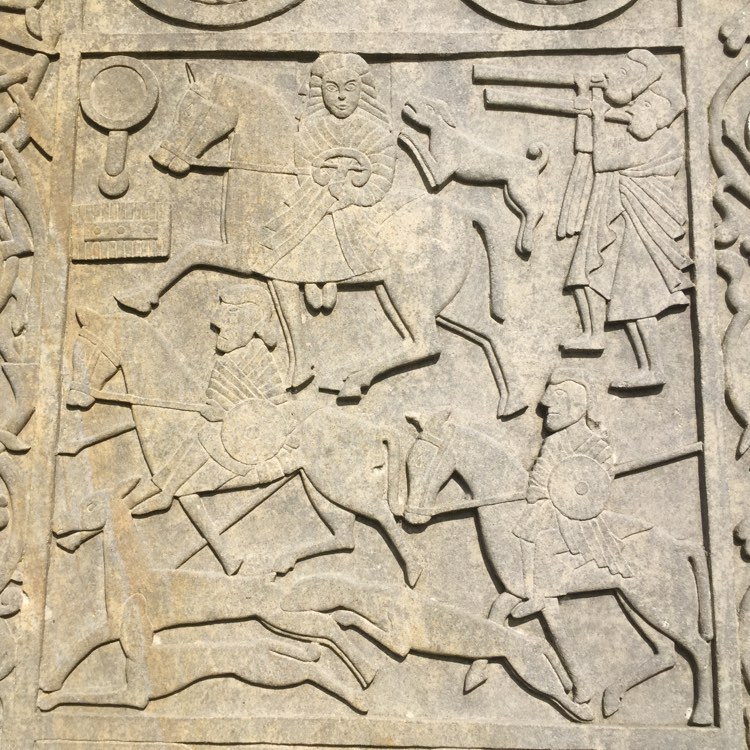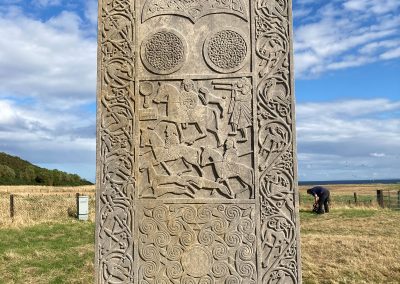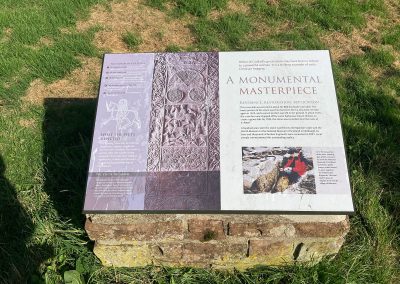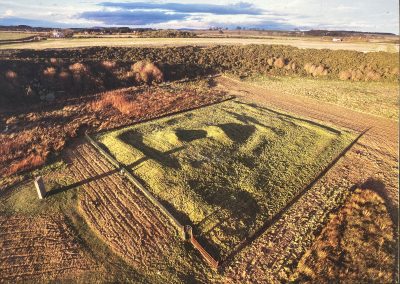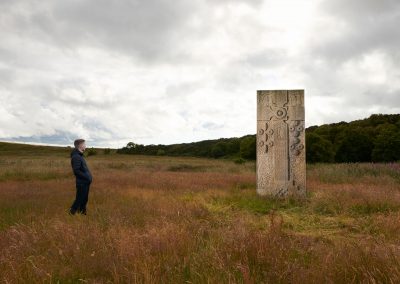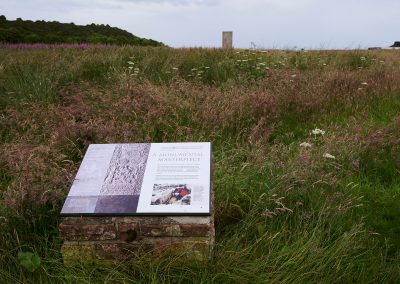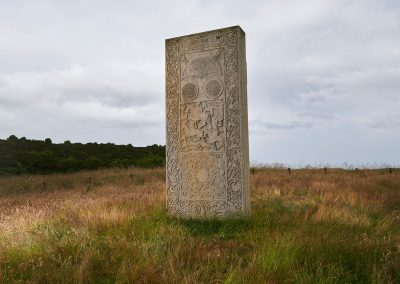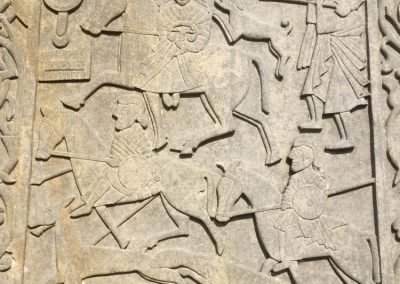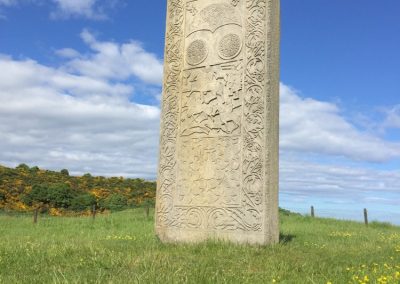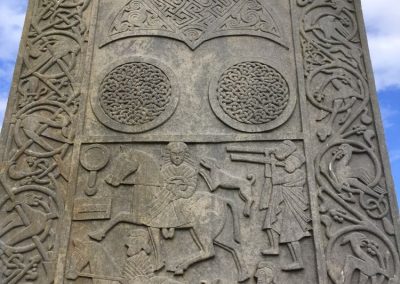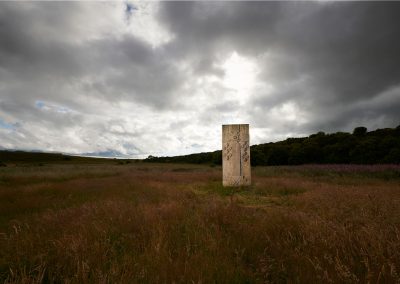Hilton of Cadboll Stone
Location
Easter Ross, IV20 1XE
Accessibility and amenities
Access over rough ground
See full details below
No entry free
Hilton of Cadboll Stone
Location
B9166, By Balintore,
Easter Ross, IV20 1XE
Accessibility and amenities
Good access
See full details below
Top image, Hilton of Cadboll stone © Ewen Weatherspon
Bottom image, Hilton of Cadboll stone, detail © Rowan Tree Consulting
Hilton of Cadboll Stone
Clach Bhaile a’ Chnuic
A fabulous example of an early Christian Pictish stone. Almost eight feet (2.3 metres) high, its intricate carvings include a hunting scene watched by a woman, and her inclusion (women rarely appear on Pictish carved stones) suggests that she was important to the Picts of this area – perhaps even Pictish royalty.
The stone you can see is a detailed full-size replica of the original stone which is now housed in the National Museum of Scotland in Edinburgh. The replica was commissioned by local people and carved by sculptor Barry Grove.
The intricately-carved base of the original stone can be seen in the nearby Seaboard Centre in Balintore. It is is due to be moved to the new John Ross Visitor Centre in Balintore in summer 2021.
The local Historic Hilton Trust has recently developed an augmented reality mobile phone app interpreting the history of the site and latest thinking on the symbolism on the stone. Further information is available on the interpretive panel on site.
The Hilton of Cadboll Stone is just one of the amazing Pictish sites in this area. See Easter Ross (Tarbat) Peninsula itinerary for further details.
If you are travelling between the Black Isle and the Easter Ross (Tarbat) Peninsula, why not use the Cromarty Ferry (seasonal service)?
Further information
The central panel in the landward face of the stone shows a hunting scene with a woman mounted on horseback. She is watching two horsemen carrying shields and spears hunting with three hounds. She wears a large brooch and two trumpeters follow behind her on foot. The iconic Pictish mirror and comb is to her left and above her are large carvings of a crescent and V-rod, double disc and Z-rod.
Archaeological evidence indicates the stone toppled and broke soon after it was erected. The bottom portion was left in the ground and lost when the stone was re-erected. In 1676, the original carving of the Christian cross on the seaward side of the stone was chipped off and replaced with an inscription commemorating a local man called Alexander Duff, along with his three wives.
An archaeology project in 2001 began work to excavate the thousands of broken fragments chipped from the stone. The team also found the beautifully preserved original base of the Hilton of Cadboll Stone which is now on display in the Seaboard Centre in nearby Balintore. The replica Hilton of Cadboll stone onsite today was carved by Barry Grove to reproduce the designs on the original cross-slab as closely as possible.
The grassy mounds beside the Hilton of Cadboll stone are all that remains of the medieval chapel that once stood on this site. It is not known if the chapel was here when the Hilton of Cadboll cross-slab was carved but it is clear this was once an important religious site. The Hilton of Cadboll chapel is cared for by Historic Environment Scotland. https://www.historicenvironment.scot/visit-a-place/places/hilton-of-cadboll-chapel/
https://her.highland.gov.uk/Monument/MHG8546
https://www.heritagehilton.co.uk
Accessibility and amenities
Visit website
No entry fee
Free parking
Park in informal layby at entrance to chapel site
Less than 500m From Parking
No wheelchair access
Access to stone over rough ground.
Strong footwear recommended
Access by public transport
Search for National Cycle Network routes on the Sustrans website.
Plan your journey by public transport using Traveline Scotland.
Find more like this
